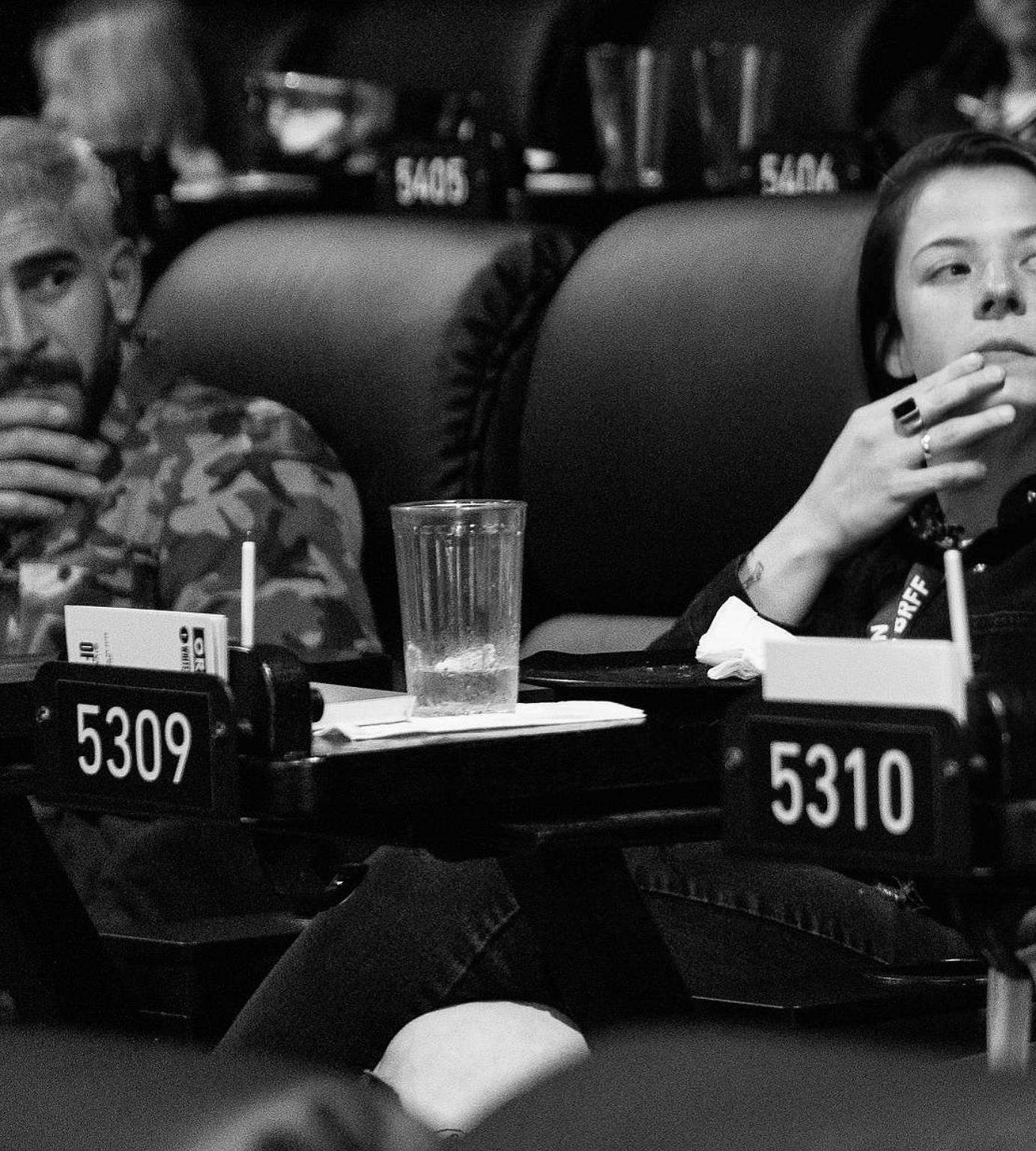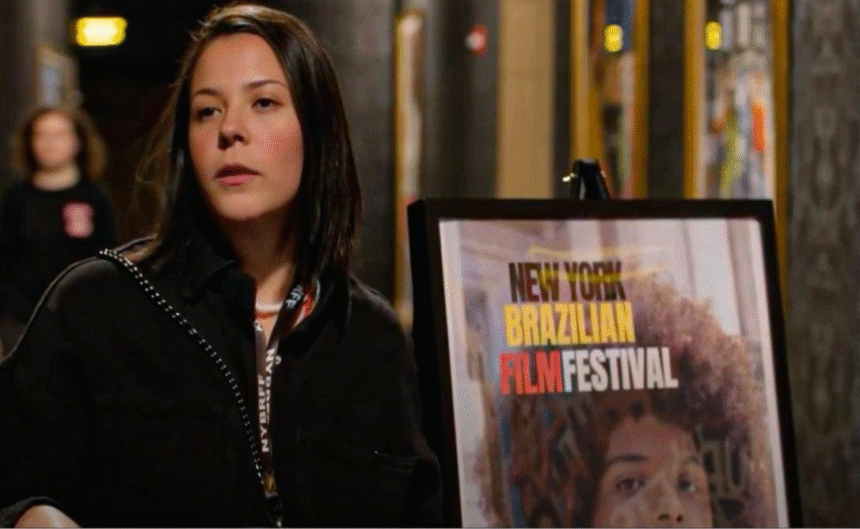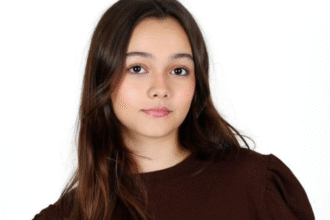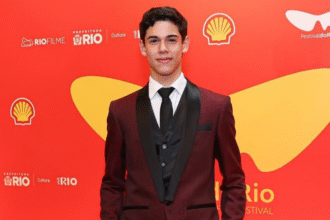Based in New York for over ten years, director and executive producer Laura Barker — known for her leading role in North American theater and cinema and for founding the New York Brazilian Film Festival — now debuts as a photographer. Her first authorial series reveals a new creative gesture alongside actress and model Priscila Reis, protagonist of the series Stupid Wife and the drama Every Day the Same Night, in a raw, urban and poetic essay captured by Laura’s lens in the heart of Brooklyn.
You have already gained recognition in theater, film and television in the United States, but now you are making your debut as a photographer in an impactful photoshoot with Priscila Reis. What motivated you to transition into photography and what did you find different or similar in this new form of artistic expression?
Cinema has always been my starting point, not only as a language, but as a way of seeing the world. Photography, for me, is an extension of this perspective. What has changed is the time taken to create: in cinema, there is a long process, structured in narrative and continuity. Photography, on the other hand, has allowed me to work in the moment, to trust what appears between one movement and another. What remains the same is the construction of the atmosphere, the character and the scene. Even with a single click, I continue to think about this composition, as if each photo were a frame of a film that does not need to be explained. That is what attracted me: the freedom to tell a story without depending on the logic of the script and a lot of movement.
By choosing black and white as the main aesthetic for the shoot, you talk about eliminating the excess to reveal the essential. How do you define this “essential” when you look at and at the city that serves as the backdrop?
Black and white helps me cut out the noise, a choice that directs the eye to the structure of the image: light, shadow, intention. When I photographed Priscila, I realized that the essential was not something I needed to construct, but something that was already within her. There is a subtle tension between restraint and surrender that permeates her presence. And this appears in the smallest gestures: in the way she holds her gaze, in the time she gives to her own body, in the way she occupies this space in the lens. Brooklyn, on the other hand, with its more urban and at the same time intimate architecture, offered the ideal counterpoint, giving the feeling that the city and she do not compete in the image, they complement each other. And I think it is in this silent dialogue that the essential is revealed.
The photography series mixes elements such as leather, mesh and metal chains with Brooklyn brownstone architecture . How do you see the relationship between fashion, architecture and visual narrative in this work?
Fashion, architecture and narrative are not separate; they all speak of language, surface and depth. Leather, mesh and chains are not there just as a style; they have weight, texture and friction, each element as part of the same visual grammar and contrast with the almost ceremonial rigidity of the brownstones , which carry a very important urban memory for New York City. So fashion, in this context, becomes language, and architecture, setting and character at the same time. The dialogue between these layers builds a silent tension between the contemporary and the historical, between the body and the concrete. It is almost like a choreography between what moves and what remains. And the narrative is born exactly there: in the friction between these two surfaces.
You mentioned that working with Priscila was like accepting an invitation to dance. What do you think this creative “flow” brought that was most authentic to the result?
That was exactly it: a dance in which none of us knew the choreography for sure, but we trusted the intuitions and experiences we carry as professional baggage. Instead of leading, I preferred to react — adjust my focus to her movement, like a camera that finds its exact point based on what is revealed. This required me to surrender to her time: to the intervals, the silences, the microgestures . Priscila has a rare body awareness and a precise reading of space. The result is the fruit of this directed freedom, where control gives way to presence. And perhaps that was what brought something unique: the images are not born from a previous idea, but from the way she moved for me.

Throughout your career, you have been at the forefront of major Broadway productions and film festivals. What inspires you to seek out new artistic languages, such as photography, instead of settling for an area where you are already recognized?
Comfort has never appealed to me. I like to be in movement and expansion in all areas of life, and in my artistic career it could not be different. I have always seen myself as an artist in transit. Photography provokes me because it forces me to unlearn, and this is essential to keep me creatively alive. Each language challenges me to be a beginner again, to fail or succeed in a new way, and it is precisely in this process that I learn. Perhaps this is the greatest loyalty I can have with myself: never stop listening to what moves me, even if it means starting from scratch.
In New York Brazilian Film Festival, you promote Brazilian cinema in the United States. How does this cultural bridge between Brazil and the US influence your own vision as an artist and photographer?
This bridge is the basis of my vision. Brazil gave me fire, urgency, and a sense of collectiveness. The United States gave me structure, technique, and space to experiment. I live between these two worlds, and this tension ends up being fertile for me. Perhaps that is why my visual references also oscillate: between the sensory density of a cinema that comes from the body, like Brazilian cinema, and the formal precision that I learned by observing filmmakers who construct images like architecture. This is what allows me to think of photographs that do not settle into a single aesthetic. That do not reduce Brazil to the exotic, nor the United States to coldness. It is in the in-between that I create.
The black and white series also has a color version, with handmade graphic treatment. How did you decide to include these two versions and what do each of them represent to you in terms of visual storytelling?
The color version came about in the post-production process, as happens in cinema, when you realize that the image can say something else depending on the atmosphere you create around it. Black and white has a rawness that interests me, which reveals the gesture, the emotional structure of the body in the scene. The color version, with its graphic treatment, allowed me to explore another layer of language, closer to film editing than capture. These are not aesthetic variations, but variations in point of view.
You said that you intend to intensify your presence in Brazil in future creative projects. What kind of connections and inspirations do you hope to find here to continue your artistic journey?
Even though I’m still here, I still feel like an active part of what’s being produced in Brazil. The festival is already a concrete bridge between the two countries, but I want this connection to deepen in my own work as well. I want to delve deeper into Brazilian cinema, to collaborate with local artists, to get closer to the narratives that emerge there by listening to those who are close by, even from a distance. Directing a feature film that is built between the two territories, in terms of themes, bodies, and atmospheres, is a real desire. I want to bring together everything I’ve learned over the years about languages, geography, and processes, and put it to work in a work that belongs to both places.
Follow Laura Barker on Instagram





